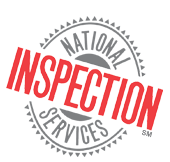Checking for elevator safety
Stuck and freefalling elevators have spiced up many a movie scene, but in real life such events are anything but entertaining. Elevators demand rigorous inspectors and maintenance to ensure their continued operation and safety. Following are elevator inspection tips for building maintenance personnel:
Elevator basics
Traveling on vertical tracks mounted on the walls of the hoistway, the elevator combines many machines and devices for its operation. The tracks or guard rails position the car and also provide a surface for the operation of safety clamps, which prevent car runaways or freefalls.
Vertical travel motor power is provided by either a hydraulic plunger or motor-driven cables or wire ropes. The use of the hydraulic lift is usually limited to low-rise buildings of about fifty feet, while wire rope or cable-driven elevators are used in both high- and low-rise buildings.
Wire rope units are either traction or winding drum hoist machine types. Both use counterweights to reduce the amount of driving power required for lifting or lowering. Machines can be a.c.- or d.c.-driven, with d.c. having the wider range of control options. Controllers for all elevators perform the same basic functions, including closing doors, controlling travel speed to the desired landing, opening doors and repeating the sequence as required.
Inspection specifics
The operation of most elevators is controlled by local building codes that dictate lighting, operating characteristics and safety features such as electric floor matting, capacity placards, test tags and inspection certificates.
Specially, elevator inspection teams should examine:
- Wire cable. Diameter, manufacturer’s rated breaking strength, grade of material used, month and year of installation should conform with codes and be properly registered on the tag. Care should be taken to inspect the cables for any evident signs of failures such as side or bottom wear or broken strands. Stranded steel cables for hoisting should be continuous and nonspliced.
- Safety shoes. The inspection team should also be certain that safety shoes are installed and operable before anyone rides the elevator cars, even inspection personnel.
- Counterweight guards. These should be installed in the elevator pits to protect any personnel working there; these are of particular importance when the elevator is undergoing repairs.
- Pit depth and shaft weight clearances. These vary with rated car speed and feet per minute. For example, a car traveling at 100 feet per minute requires a pit 4 feet deep, while a car traveling at 600 feet/minute requires a pit of 7 feet, even though both require only 2 feet of clearance when resting on the fully compressed buffers in the pit. The clear space is to protect a person working in the pit should a car overrun the final limits switch and descend into the pit.
- Emergency access. Current building codes require adequate access to the elevator shaft for emergencies or inspection work. A single car must be provided with means of access from all floors. Where two or more elevators are in a common shaft, access may be gained through side exits or from the roof of the operative car. As a minimum, usually three hoisting cables must be used on all traction-type elevators with a minimum cable diameter being 1/2″. The usual minimum for drum or sheave size is 40 times the diameter of the cable used, indicating a minimum of 20″ in size.
- Conduit. Conduit and wire installed in the hoistway must be in conduit, with the exception that Greenfield (armored) cable can usually be used for short sections connecting the wall stations and hoistway switches to the conduit. The hall station is a flush station equipped with directional buttons for up and down at intermediate floors, and a single button on terminal floors.
- Controls. The controls for the elevators are fairly complex, and include interlock, which stop the car whenever the hall door is open, as well as limit switches that shut down the elevator if it goes past certain limits at the terminal ends of the rails.
When an inspection team is operating the elevator, a remote inspector’s station can be set up so that the inspector can operate the elevator at slow speed from the car top without interference from the automatic call controls. An inspector switch is often also installed in the elevator pit and is interlocked through the safety line circuit.
